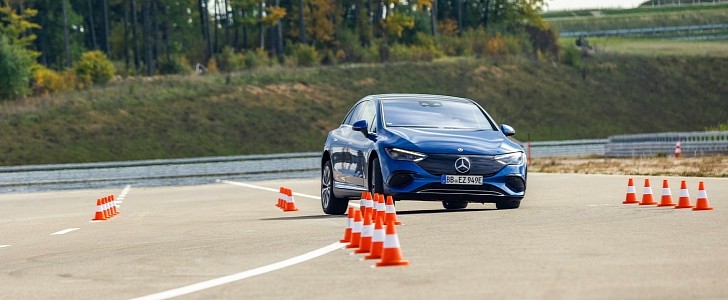Zero fatal car crashes by 2050 – that's one ambitious goal from Mercedes-Benz, who announced that they are aiming very big with their Vision Zero road safety strategy. The German automaker wants to make all Mercs capable of eliminating deadly collisions by mid of the 21st century.
Making cars aware of possibly dangerous points on the road is not as easy to put together as it sounds because today's active and passive safety systems are insufficient to cope with this puzzle. A whole new infrastructure needs to be built to make automobiles reach that level of human life protection.
To cite the Mercedes-Benz officials, "we are pursuing our vision of accident-free driving. In other words: no more accidents involving a Mercedes vehicle. (…) Highly automated and autonomous driving will be a decisive contributor to its success." says Paul Dick, Head of Vehicle Safety at Mercedes-Benz Group AG.
As an intermediary step towards this almost surreal target, Mercedes want to half the number of car-related fatalities and severe injuries by 2030 (compared to 2020 figures). The "Vision Zero" plan engulfs many factors, with different disciplines and institutions collaborating to improve the grim road statistics.
The German car company shifted its focus to "an exciting innovation: a central software based on the future MB.OS platform" to manage the cars' safety systems. The philosophy behind this approach is that a single control unit is faster to respond to sensor data inputs than the current array of active and passive programs.
But individual automobile equipment alone is not capable of assessing road incident statistics. MB is developing a "Road Safety Dashboard" (RSD) software to identify risky urban traffic areas. Currently tested in London, the system has the potential to predict unsafe locations "prior to an incident taking place."
A complex algorithm analyzes GPS-tracked individual alerts and automatically classifies potential collision spots. The driver of RSD-equipped cars must consent to anonymized vehicle data usage to send the data to the processing software.
"The 'Mercedes-Benz Road Safety Dashboard' shows responsible local parties possible danger spots for collisions on a road map: easy to use, user-friendly, and with lots of information for target-oriented action. The focus is primarily on the most vulnerable, unprotected road users: pedestrians and cyclists. Therefore, risky situations in zones around schools, nurseries, and universities are prioritized in London. "
A similar project is underway in the Netherlands to find dangerous portions of highways and backroads and then recommend safety-improving construction measures. Also, a pilot program of the Dutch project can even warn about black ice spots, alerting other vehicles and the traffic control center.
To cite the Mercedes-Benz officials, "we are pursuing our vision of accident-free driving. In other words: no more accidents involving a Mercedes vehicle. (…) Highly automated and autonomous driving will be a decisive contributor to its success." says Paul Dick, Head of Vehicle Safety at Mercedes-Benz Group AG.
As an intermediary step towards this almost surreal target, Mercedes want to half the number of car-related fatalities and severe injuries by 2030 (compared to 2020 figures). The "Vision Zero" plan engulfs many factors, with different disciplines and institutions collaborating to improve the grim road statistics.
The German car company shifted its focus to "an exciting innovation: a central software based on the future MB.OS platform" to manage the cars' safety systems. The philosophy behind this approach is that a single control unit is faster to respond to sensor data inputs than the current array of active and passive programs.
But individual automobile equipment alone is not capable of assessing road incident statistics. MB is developing a "Road Safety Dashboard" (RSD) software to identify risky urban traffic areas. Currently tested in London, the system has the potential to predict unsafe locations "prior to an incident taking place."
A complex algorithm analyzes GPS-tracked individual alerts and automatically classifies potential collision spots. The driver of RSD-equipped cars must consent to anonymized vehicle data usage to send the data to the processing software.
"The 'Mercedes-Benz Road Safety Dashboard' shows responsible local parties possible danger spots for collisions on a road map: easy to use, user-friendly, and with lots of information for target-oriented action. The focus is primarily on the most vulnerable, unprotected road users: pedestrians and cyclists. Therefore, risky situations in zones around schools, nurseries, and universities are prioritized in London. "
A similar project is underway in the Netherlands to find dangerous portions of highways and backroads and then recommend safety-improving construction measures. Also, a pilot program of the Dutch project can even warn about black ice spots, alerting other vehicles and the traffic control center.
































